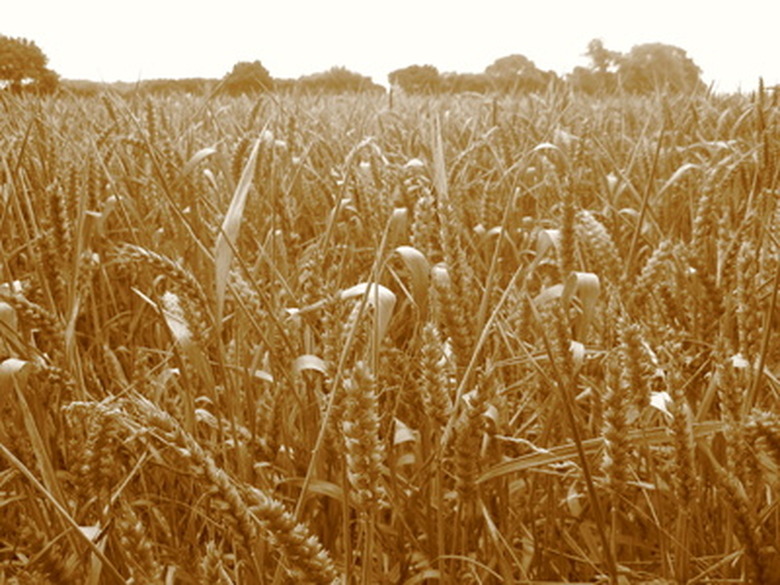Information On Curtail Weed Killer
Curtail Weed Killer is an herbicide that exhibits effective control of broadleaf weeds that threaten the vigor of a variety of agricultural areas, including crop and non-croplands and pastures. Curtail is most often applied to wheat and barley crops as a means of promoting healthy production without the interruption of invasive weeds.
Identification
Curtail Weed Killer contains the active ingredients 2,4-D and clopyralid. This herbicide is a selective weed killer as opposed to a non-selective herbicide, like glyphosate, that kills any plant with which it comes into contact. Curtail is specifically formulated for control of particular weeds, which is why it is suitable for use on entire wheat fields. Verify those plants that are affected and unaffected by Curtail before use.
Function
The active ingredients in Curtail Weed Killer function as synthetic auxins. This type of herbicide does not kill on contact. Instead, it disrupts the normal release and action of hormones as well as the natural production of plant proteins. This interruption inhibits the growth of the weed, according to the Iowa State University Weed Science.
- Curtail Weed Killer is an herbicide that exhibits effective control of broadleaf weeds that threaten the vigor of a variety of agricultural areas, including crop and non-croplands and pastures.
- This herbicide is a selective weed killer as opposed to a non-selective herbicide, like glyphosate, that kills any plant with which it comes into contact.
Types
Curtail Weed Killer controls a variety of annual, biennial and perennial broadleaf weeds. Annual weeds include, but are not limited to, wild buckwheat, coffeeweed, fixweed and velvetleaf. Biennial weeds are common teasel, spotted knapweed, common burdock and musk thistle. Perennial weeds include Jerusalem artichoke, plantain, Canada thistle and curly dock.
Application
Curtail Weed Killer is a postemergence herbicide that should be applied only one time per crop cycle without exceeding 2 2/3 pints per acre. Apply this weed killer during spring as barley or wheat are exhibiting active growth. Do not apply to wheat or barley underseeded with a legume. You may apply from 2 pints to the maximum 2 2/3 pints depending on the level of control needed. However, the greater the amount of Curtail, the greater the chance of crop injury. Contact a licensed professional or your local county extension agent for assistance.
- Curtail Weed Killer controls a variety of annual, biennial and perennial broadleaf weeds.
- Curtail Weed Killer is a postemergence herbicide that should be applied only one time per crop cycle without exceeding 2 2/3 pints per acre.
Warning
Curtail Weed Killer is toxic and must be handled with extreme caution. Keep this product in a location inaccessible to children as well as pets. Wear protective clothing, gloves and eyewear to prevent contact with skin and eyes. Avoid ingestion and inhalation. Curtail is a corrosive chemical that causes permanent eye damage and other severe injury if absorbed into the body. If contact occurs, follow first aid directions on the label and contact poison control or 911 immediately.
